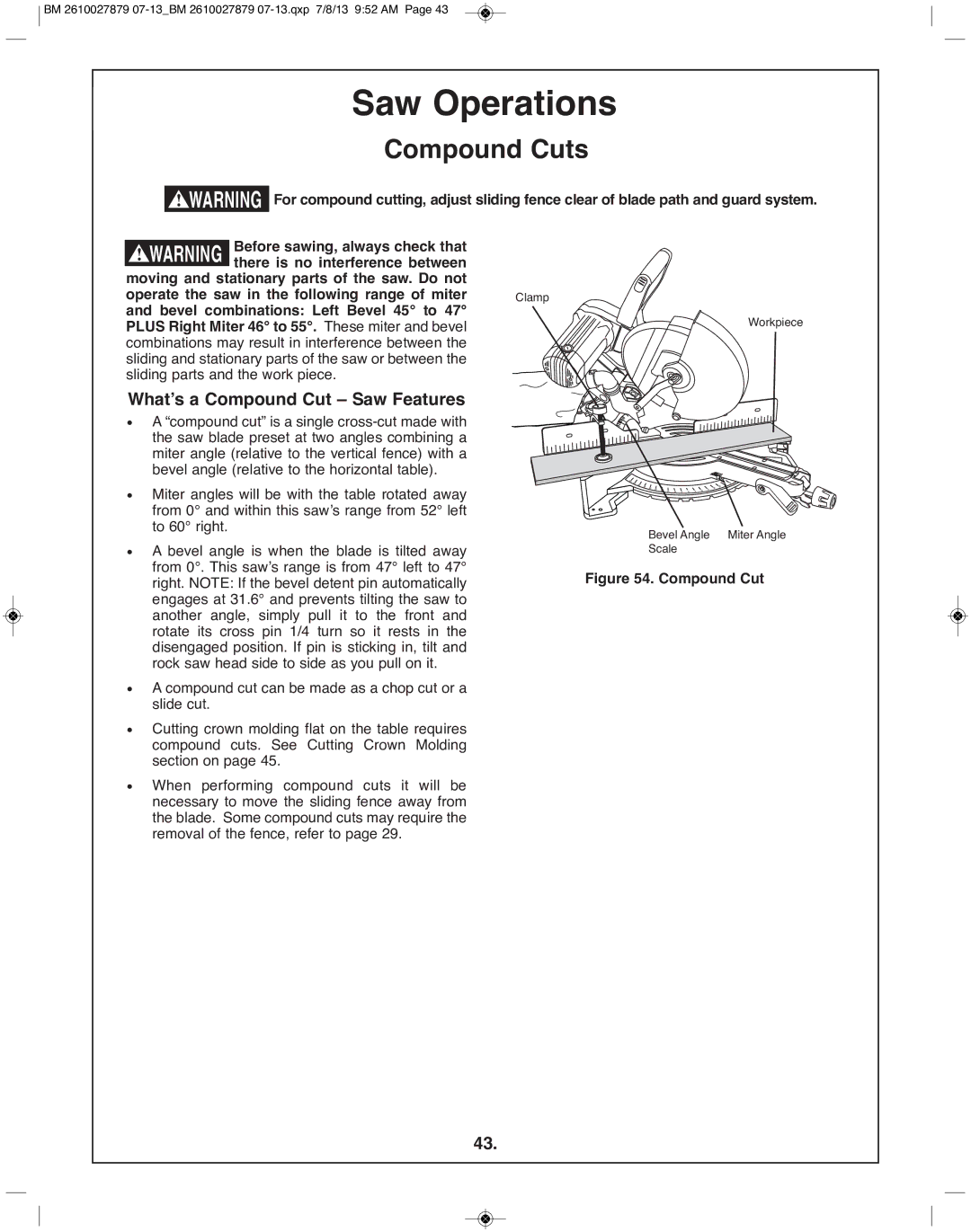
![]() BM 2610027879
BM 2610027879
Saw Operations
Compound Cuts
! WARNING for compound cutting, adjust sliding fence clear of blade path and guard system.
! WARNING Before sawing, always check that there is no interference between
moving and stationary parts of the saw. Do not
operate the saw in the following range of miter | Clamp |
and bevel combinations: left Bevel 45° to 47° |
|
plUS Right Miter 46° to 55°. These miter and bevel |
|
combinations may result in interference between the |
|
sliding and stationary parts of the saw or between the |
|
sliding parts and the work piece. |
|
What’s a Compound Cut – Saw features
• A “compound cut” is a single
• Miter angles will be with the table rotated away from 0° and within this saw’s range from 52° left to 60° right.
• A bevel angle is when the blade is tilted away from 0°. This saw’s range is from 47° left to 47° right. NOTE: If the bevel detent pin automatically engages at 31.6° and prevents tilting the saw to another angle, simply pull it to the front and rotate its cross pin 1/4 turn so it rests in the disengaged position. If pin is sticking in, tilt and rock saw head side to side as you pull on it.
• A compound cut can be made as a chop cut or a slide cut.
• Cutting crown molding flat on the table requires compound cuts. See Cutting Crown Molding section on page 45.
• When performing compound cuts it will be necessary to move the sliding fence away from the blade. Some compound cuts may require the removal of the fence, refer to page 29.
Workpiece
Bevel Angle Miter Angle
Scale
figure 54. Compound Cut
43.
